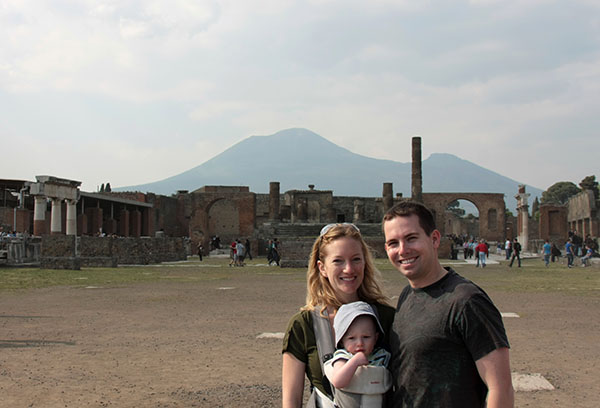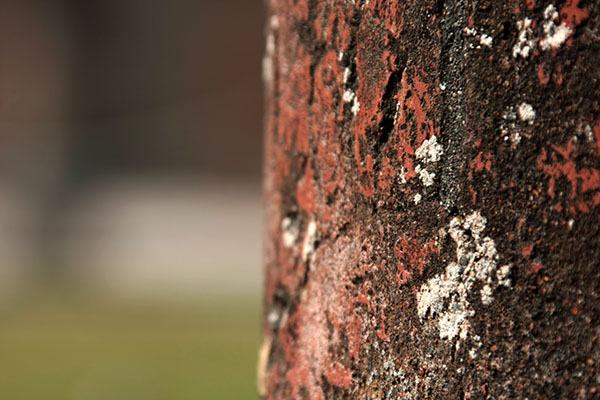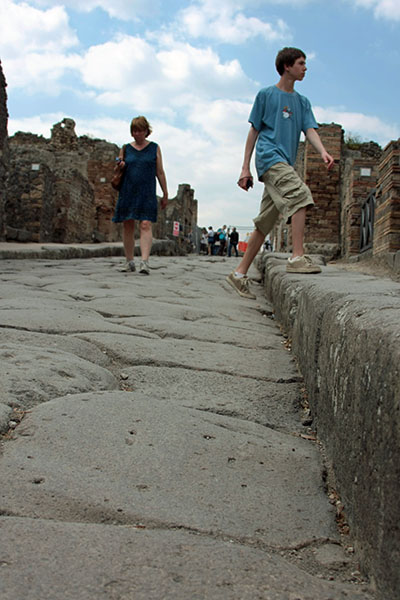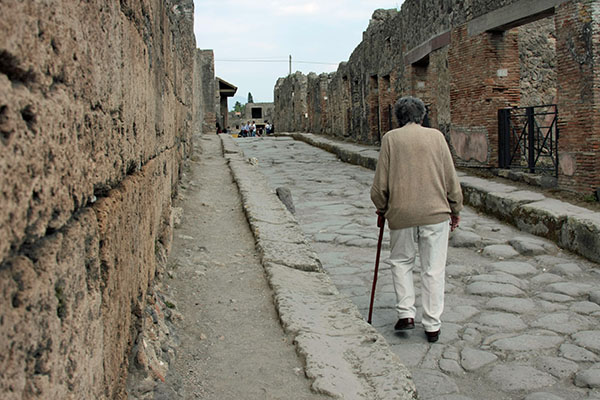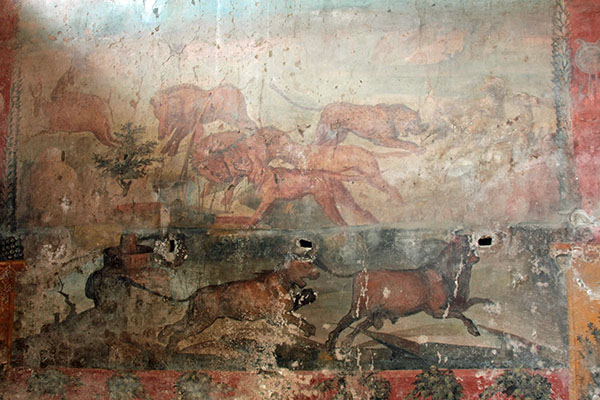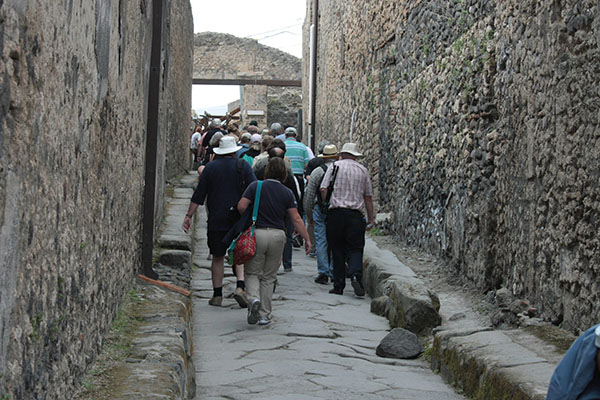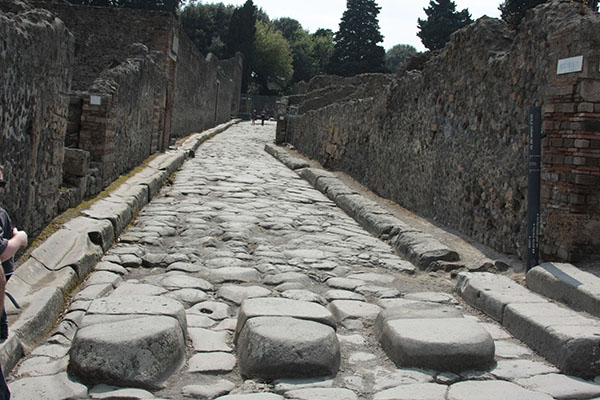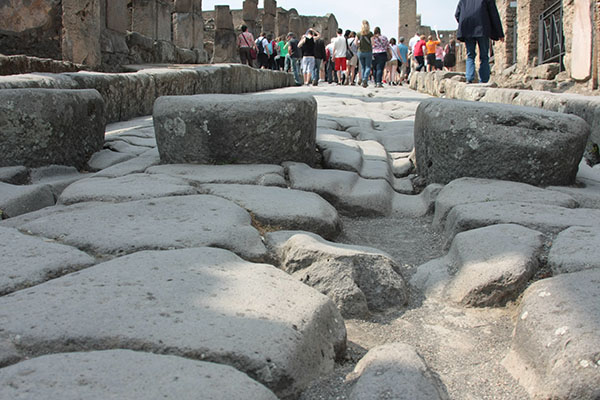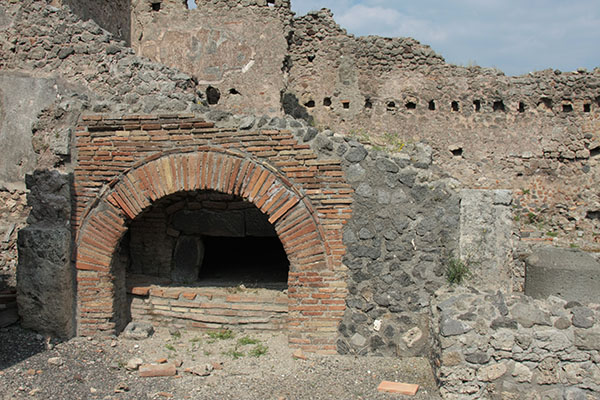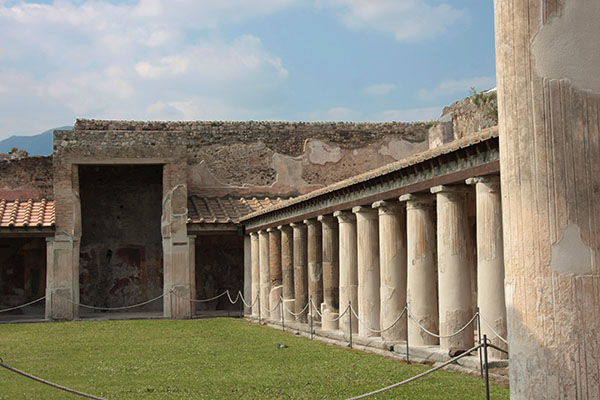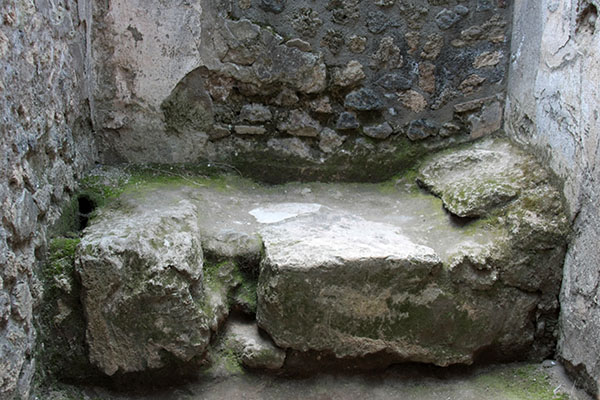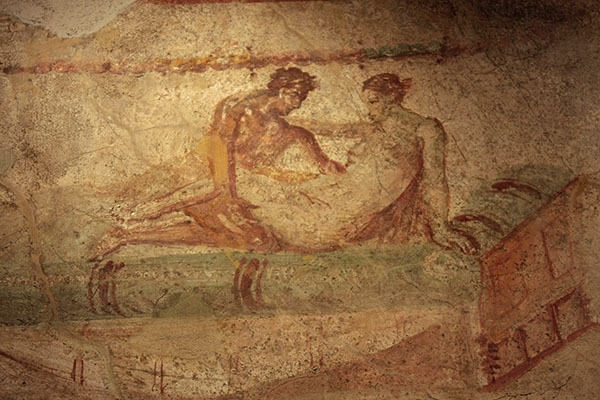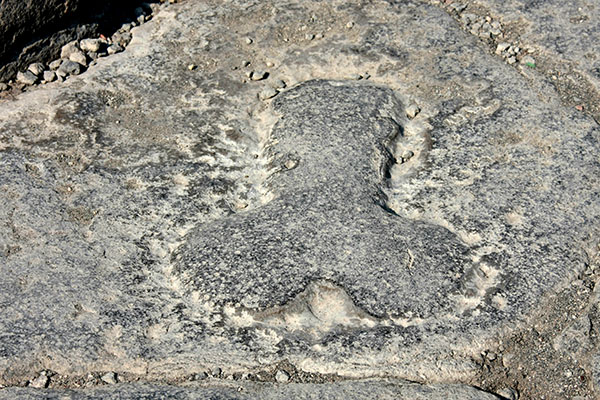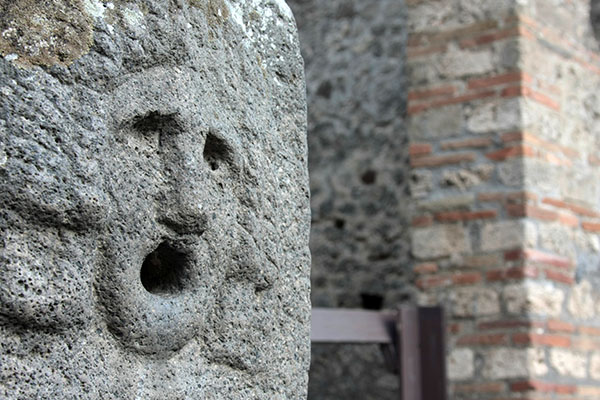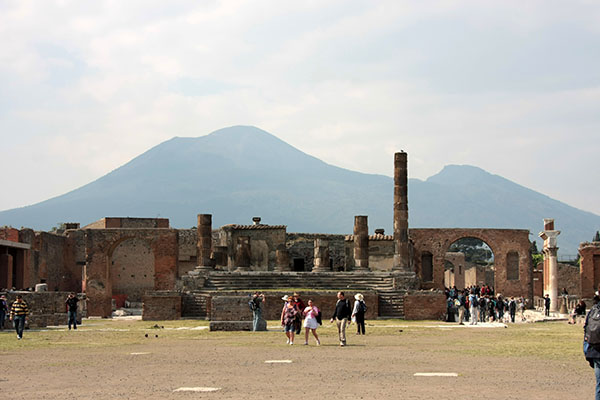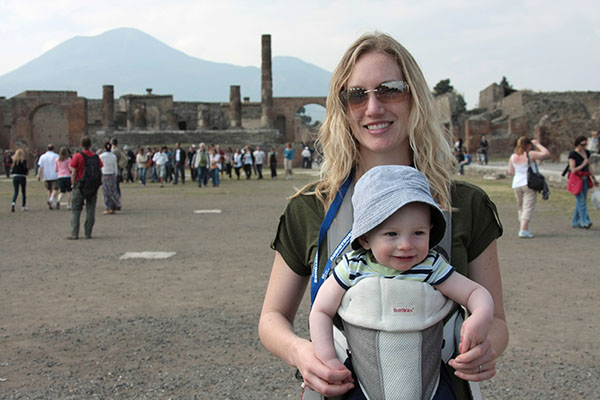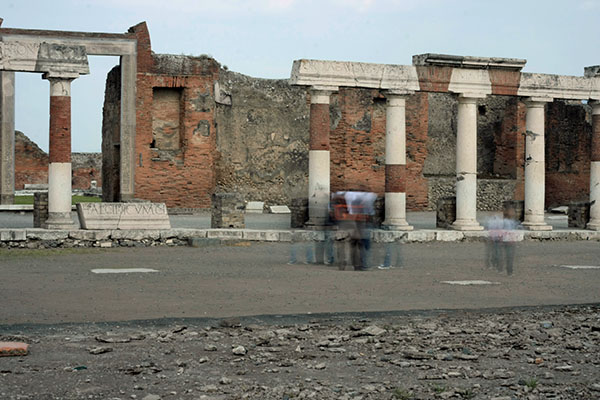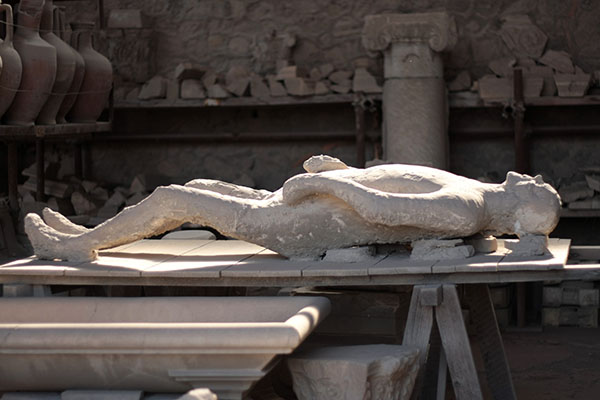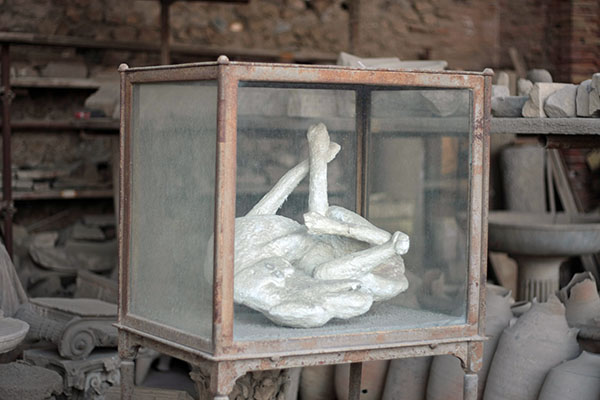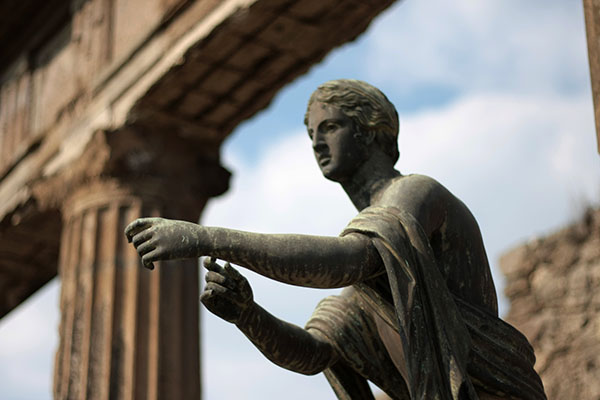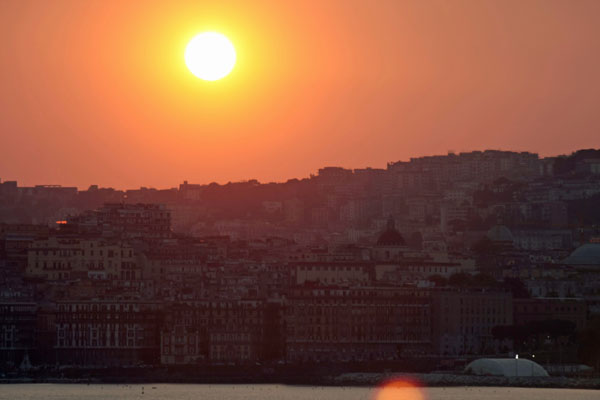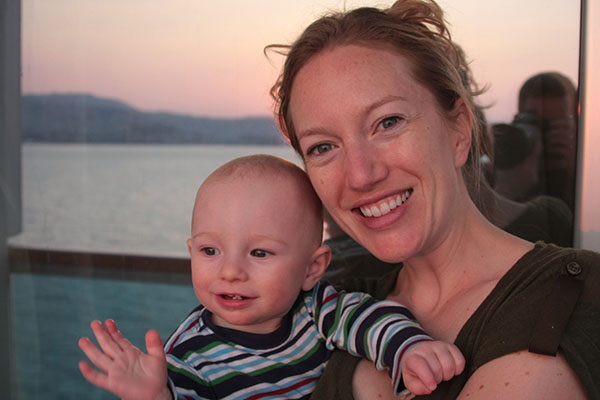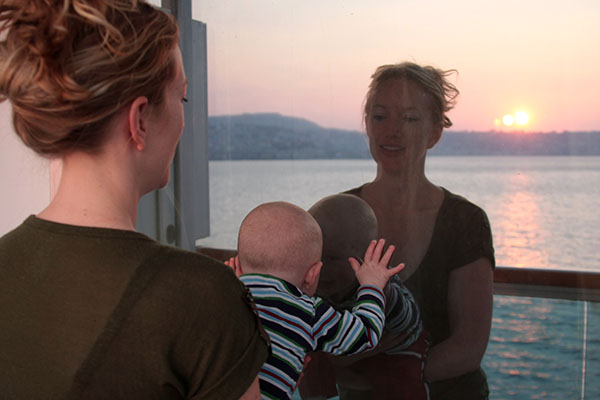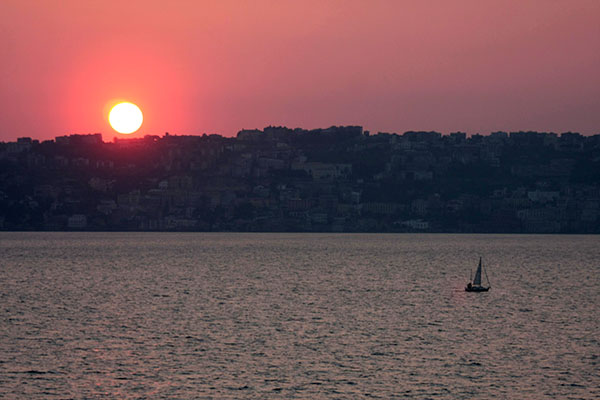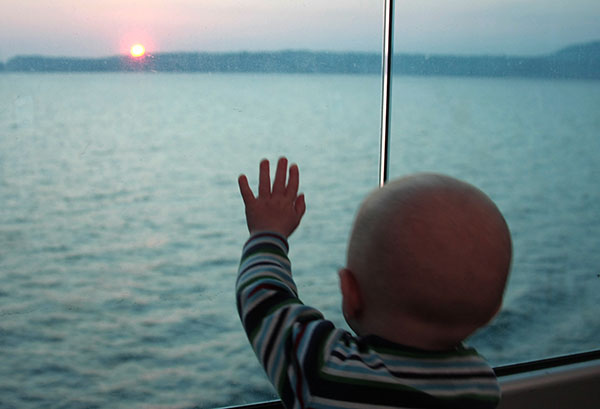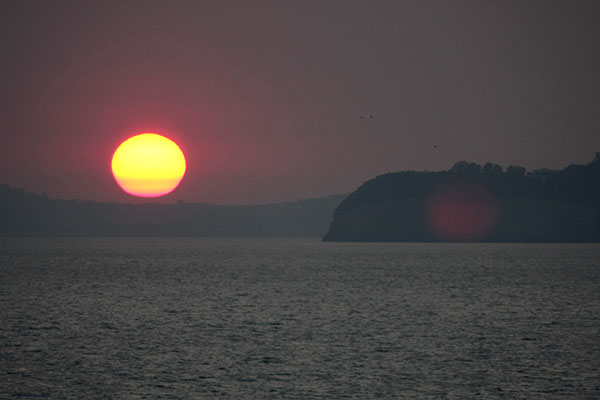Next stop … the sprawling city of Naples. Although we didn’t spend much time in the city, it felt a little like Marseille.
Our time was spent in a small ancient city sitting at the foot a mountain. Mt Vesuvius. That city is of course, Pompeii and infamous for it’s destruction in the year 79 CE when the ash from an eruption blanketed the entire city and left an eerie but accurate snapshot of life in the first century.
Here we are in the main square, the Forum. Although the stones have mostly been looted for use in other buildings, it’s an impressive space. The story we were told was that the mountain was a single peak before the eruption. If you can imagine it, the space between is what was ejected by the force of the eruption.
These are the stairs for the main theater.
Although it looks more like lichen, this is original paint from the first century … or earlier.
The raised sidewalk of the Pompeii street.
These pots were used for storing wine. Somehow I think if any survived in their blanket of ash and pumice they probably wouldn’t have been any good in the 18th century when they were uncovered. Still, it’s an interesting thought. How would wine from the first century taste??
This is our guide. Although he was very knowledgeable (as a former History Professor), he was mostly retired and didn’t seem to like people very much. Oh well, in spite of his attitude, we still enjoyed the tour.
The fresco inside a wealthy family’s house.
Somehow I think these people people who walked these streets 2,000 years ago looked a little different. Of course, today, they are indicative of the 2.5 million tourists who come each year.
Steps to cross the road.
Ruts in the road … either from wear, or intentionally carved to help avoid the stones (and consequent traffic jams).
A bakers oven … complete with preserved loaf of bread (definitely not good still).
The Stabian Baths.
While it may not look terrible comfortable, nor inviting, this was a (small) bed. It was used in a brothel. Apparently, there were no shortages of carnal pleasures in ancient Pompeii. They had a much more enlightened view of the physical world than many “modern” cultures.
This image is representative of the murals painted on the walls of the brothel. There is some dispute on what their purpose was. They could have been painted to heighten the pleasure of the occupants … or more simply to depict a sort of menu. The latter idea was accepted by our guide. It makes sense in a place which was the cross roads of a number of culture and languages. If you didn’t speak the same language … the pictures would help immensely to avoid potential miscommunication. Sadly, when many of the images of sensuality and sexuality were uncovered in the 19th century, they were dubbed too indecent and either mutilated or re-hidden. Some took another 100 years to re-emerge. I find that a very sad statement on our hyper-sensitivity to sex.
As further evidence that the images or symbols were used as direct language, these phalluses were used to point travels in the direction of carnal pleasure. Apparently, prostitution (male and female) was a very popular profession and the subsequent ubiquity drove the price to around the cost of a meal. Of course, we can assume there were variables that made price flexible.
A water spout on a local well.
Again in the forum with the sleeping giant Mt Vesuvius in the background.
Anna and X enjoying the square with lots of other tourists.
I made this image with the ND filters… I see it depicting the fleeting time we spend on Earth and the relative enduring qualities of the city.
Here is another immortal reminder of the deadly day(s) in the year 79. People were buried alive. So, when they were uncovered in the modern era, all that was left was an empty cavity where their body had been. To show their bodily form, plaster was injected into the void and the ash & pumice removed. This is one example of an unfortunate victim of the volcano.
It’s a little tough to see what this is. It’s a dog and many believe it was chained up outside the House of Vesonius Primus when it was done in by the volcano.
This is a boy who was killed. He appears to be holding his face and crying.
In the temple of Apollo.
Ancient Pompeii’s ruins with modern Pompeii in the background.
Although he probably won’t remember his visit to Pompeii, Alexander had a good time…
On the boat, we were able to watch a beautiful sunset descend on Naples.
We watched from our balcony.
Buh-bye!
Good night, Sun.
Well, that finishes our time in Naples. Up next is Sicily, where we got to see up close Europe’s most active volcano, and a bunch of other really cool sites.
So, until then…
–Jim

